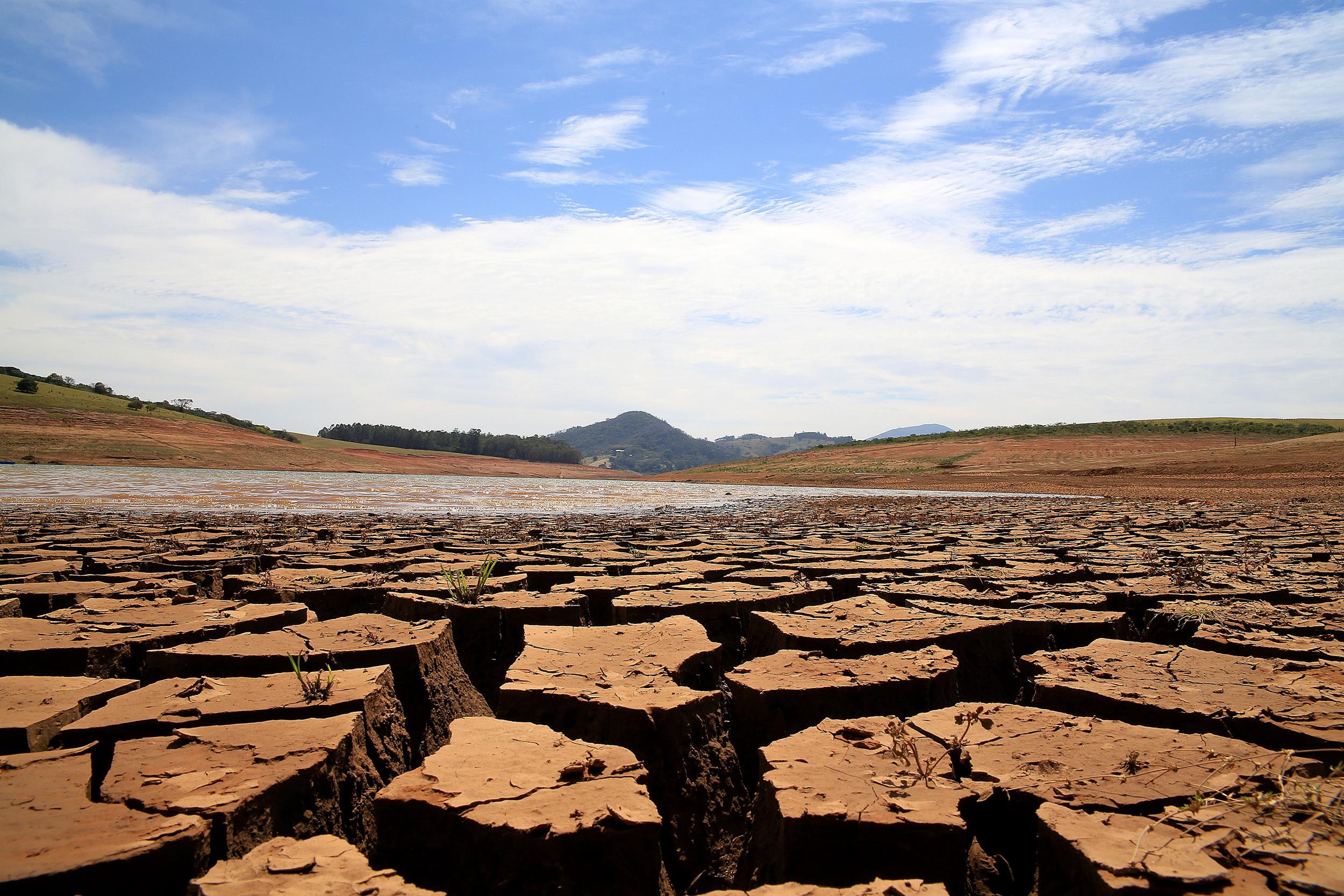The central plateau catchment area, the vastest among the six primary drainage basins inside Iran, is hopelessly struggling in a battle against drought these days.
This is not a new challenge, as climate change and low precipitation have already put the region's inhabitants under pressure over the past few decades.
However, the trend appears to be gaining momentum in recent years with population growth and unsustainable development exacerbating the conditions.
Based on the data regularly released by the Water Resources Management Company, the catchment area has received almost half of the rainfall it did during the last water year.
According to the stats, since September 23, 2017 (beginning of the current water year) up to May 5 , the central plateau has been fed with 83.2 millimeters of rainfall, 44.9% less than the last corresponding period with 151 millimeters.
The whole catchment area is composed of nine secondary watershed areas, including salt lake, Gavkhouni, Bakhtegan, Abarqu, Hamoun, the Lut Desert, central desert, Siahkouh and Kavir-dar-anjir.
Among all, Hamoun and Abarqu areas have experienced the most drastic fall in the amount of rainfall.
With 25.8 mm of precipitation during the seven months since September 23, 2017, Hamoun has registered an enormous decrease of 84.4%, compared to the previous water year's 165.9 mm.
Far close in numbers, Abarqu stands as the second driest watershed area, having received 93.9 mm of rainfall, 74.5% less than the corresponding period of last year with 367.9 mm.
The least troubled of all areas has been Siahkouh. Although still not so wealthy in terms of rainfall, the catchment area has registered only a 2.8% drop in precipitation, decreasing from 47.1 mm to 45.8 mm.
The figures provided by the Water Resources Management Company also show an unfortunate average slide of 44.4% in precipitation on the central plateau over the past five decades.
Fighting for Water
Iran's average precipitation rate has been lower than the global average for at least 10 years, making it one of the world's most water-stressed regions. Some 37 million Iranians are said to be living in water-stressed areas.
The long-term struggle with drought, combined with high consumption and waste of water, has caused renewable water resources to plunge to under 120 billion cubic meters.
This has put the residents of arid areas under severe strain lately, as solutions such as water transfer not only have not been helpful as expected, but also have whipped up complaints among locals whose water sources are being shared with other areas.
Already under pressure by water scarcity and low precipitation, farmers in eastern Isfahan, whose livelihood strongly depends on their share of water coming from Kouhrang Dam, have voiced grievances several times since the implementation of a water transfer plan to pump water from Kouhrang in Chaharmahal-Bakhtiari to Yazd Province.
They have vandalized water pump systems several times because the amount of water that previously fed the farms in Isfahan has shrunk with the transfer project.
Experts believe although their action is violent, farmers cannot be blamed alone.
Beacon of Hope
The long-debated project on water transfer from the Sea of Oman and the Persian Gulf in the south to the mainland is a sparkle of hope for officials to ease the drought in the central parts of the country.
The transfer project is supposed to take water from the southern seas to the provinces of Hormozgan, Kerman and Yazd, to support industries and projects in the area making a big contribution to economic development.
While the project has raised environmental concerns among officials and critics alike, there are still advocates like Masoud Tajrishi, a deputy head at the Department of Environment, who believes that the project could help boost the economy and restore the environment.
"The project can save water-intensive industries that are ironically located in the drought-stricken central plateau, and alleviate the arid climate," ILNA quoted him as saying in early March.
Esfahan Steel Company is a water-intensive industry, which is suffering from the drought creeping throughout the country, especially the central plateau.
The shortage of water is growing at a fast pace, signs of struggle over the valuable resource have emerged both domestically and internationally.
Located in the dry central plateau, the metropolises of Isfahan and Yazd have been among the first provinces where such conflicts have come to a head.
In a recent statement, Foreign Minister Mohammad Javad Zarif has for the first time taken a firm stance by warning the Afghan government to expect a response from Iran upon failure to address concerns over shared water resources that have been a matter of dispute between the two neighbors for years.
As the water crisis worsens, tensions become more serious and are likely to spill over to other regions. Proper measures to adapt with the situation and manage the dwindling resources seem all the more essential today.



